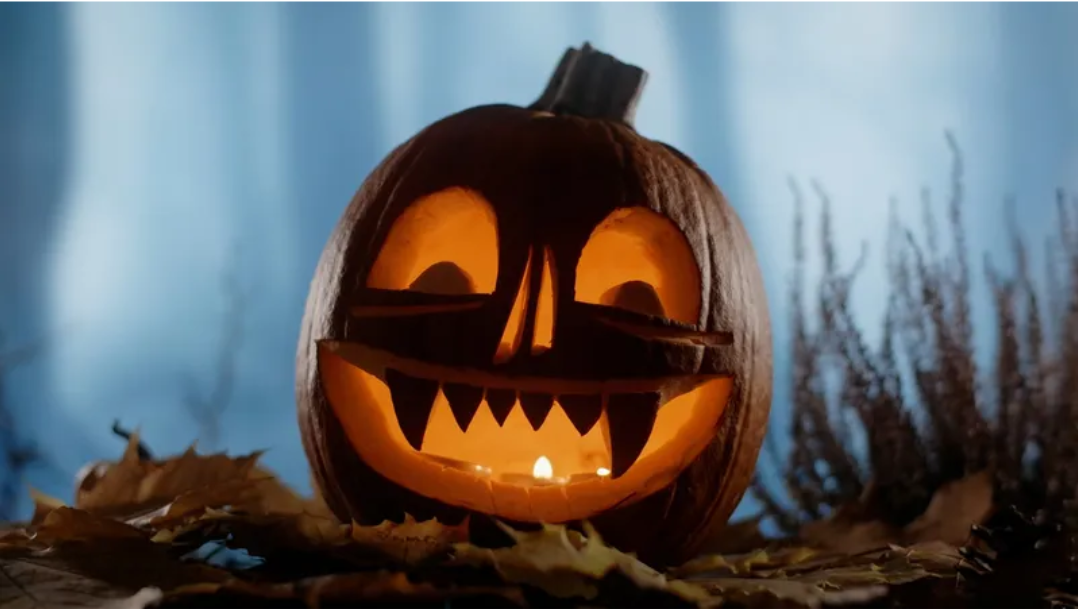Now that Halloween is here, you could say that this year, those who are getting haunted are farmers. It is clear that the first food or vegetable that comes to your mind when thinking about Halloween is pumpkins. Whether they are used for carving, decorating, or pumpkin pie, pumpkin season is most definitely a staple of Halloween. According to the U.S. Department of Agriculture, a grand total of 66,200 acres were used in 2020 for the growing of pumpkins, which resulted in somewhere around 1.5 billion pounds of harvested pumpkins. That figure is equivalent to 2 billion pumpkins! Millions of these are used for Halloween decorations and activities. It is essential to be aware of the planting, growing, and harvesting that goes into our Halloween pumpkins. Although it has successfully been done in the past, this year has been tough for pumpkin farming, due to the constant altering of the climate and therefore the failure of a large percentage of the crops.
JACK O’ LANTERNS
First, it is important to look into the history behind this fall celebration and to understand the very interesting story behind one of its most popular activities: pumpkin carving and creating Jack o’ lanterns. This tradition has been going on for centuries. Pumpkin carving likely originated from an Irish legend, whose first appearance was made in the 19th century in print.
The story’s protagonist is a man known as “Stingy Jack,” and according to the story, he invited the Devil to have a drink with him, although Stingy Jack did not want to have to pay for his drink, so Jack convinced the Devil to transform himself into a coin so that he could use him to buy their drinks. And so, the devil followed his order and turned himself into a coin which Jack proceeded to put into his pocket next to a silver cross, which prevented the Devil from changing back into its original form. Jack eventually freed the Devil – but only under the condition that he would not bother Jack for one year, and if he did and Jack died, he would not claim his soul. Not much happened until the next year, when Jack yet again tricked the Devil, but this time into climbing up a tree to pick a piece of fruit. Meanwhile, Jack carved a sign of the cross into the tree’s bark so that the Devil could not come down until the Devil promised Jack not to bother him for ten more years. But not everything went to plan since soon after, Jack died. The Devil, upset by the trick Jack had played on him and in keeping with his word to not claim his soul, decided that he wouldn’t allow Jack into hell, so he sent Jack off into the dark night with only a burning coal to light his way. Midway, Jack decided to put the coal into a carved-out turnip and, as the legend goes, has been roaming the Earth with it ever since. The Irish began the tradition by referring to this ghostly figure as “Jack of the Lantern,” and years later shortened it to “Jack O’Lantern.” This might be the reason behind any mysterious light seen in wooded or swampy areas at night, as a result of mischievous children lighting Jack O’Llanterns.
Climate change
This year, farmers have had a very difficult time growing successful crops within their acres. BBC reporters traveled near the UK’s East Midlands to figure out what was going on and found many farmers stating that “the number of pumpkins was down” or that “crops failed completely.” The main reason for this is not only due to the unpredictable variations in the weather, but also, more specifically, the wet and cold spring during planting season. Farmer Jo Belcher, whose family has run March House Farm in Great Dalby, Leicestershire, for several generations, reported that “normally at this time of year, there would be a sea of orange,” and that 2024 has been the only year in which no pumpkins have grown.
The pumpkin crisis is one more indication that it is very important to ensure that the climate change issue slowly becomes resolved or at least improved, for not only the benefit of the farmers and workers who rely on weather for their income, but also for every one of us and the future generations to come.
CITATIONS:
Torr, George. “‘Our Halloween Pumpkin Crop Has Completely Failed.’” BBC News, BBC, 9 Oct. 2024, www.bbc.com/news/articles/cnvdgvj592do.
“How Jack O’Lanterns Originated in Irish Myth.” History.Com, A&E Television Networks, www.history.com/news/history-of-the-jack-o-lantern-irish-origins. Accessed 16 Oct. 2024.

